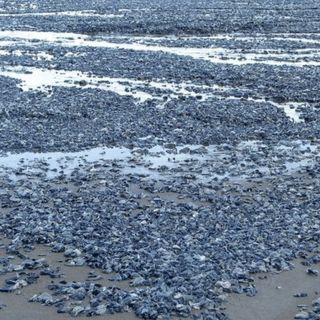Some parts of the Black Sea still think it’s the Ice Age, the glacial period which happened about 12,000 years ago, a new research shows. The discovery can further our understanding of how complex climate situations in specific time periods have influenced geographic changes over time.
Published in Earth and Planetary Science Letters, the study explains why waters in parts of the Black Sea, the inland water body between Europe and Asia, is still responding to climate change patterns prompted by the last Ice Age — the glacial episode marked by polar ice sheets.
It turns out the findings might be a case of delayed response. Researchers analyzed gas hydrate deposits, which in this case refer to methane trapped by molecules that look like solid ice-like substances in the northwestern area of the Black sea, called the Danube fan (compounds of methane and water are commonly found at many ocean margins, just like here).
Researchers found that the free methane gas under the seafloor had not risen towards the Black Sea’s surface for the last several thousand years. “This shows that the gas hydrate system in the Danube deep-sea fan is still responding to climate changes initiated at the end of the last glacial maximum,” researchers wrote in the study.
Related on The Swaddle:
Leading Climate Scientists Call for ‘Declaring a State of Planetary Emergency’
Researchers believe that unique conditions in the Black Sea, like the thick, impenetrable sediment layer on the seafloor, may have stopped the methane gas stuck below the seafloor from rising to the surface.
They used a process called seismic reflection, which usually estimates the properties of the Earth’s sub-surface, the layer just below the Earth’s surface; this time they used it to gauge the properties of the layer below the surface of the water. They found zones in the deep sea in which gas hydrates had adapted to the sea’s rising temperatures, but the methane gas that surrounded these hydrates from above and below had not. This part of the sea, they found, was lagging behind.
This study’s findings are important for climate modeling, the process of simulating the interactions of several climate reactions and their causes across separate regions, which is used by scientists to predict the scale and impact of the climate crisis. Researchers believe a similar process of modeling can be used to look into other areas more severely affected by climate change — the Arctic region, for example, which has several gas hydrate deposits.
“In summary, we have found a very dynamic situation in this region, which also appears to be related with the development of the Black Sea since the last ice age,” study co-author and geophysicist Michael Riedel adds in a statement.




